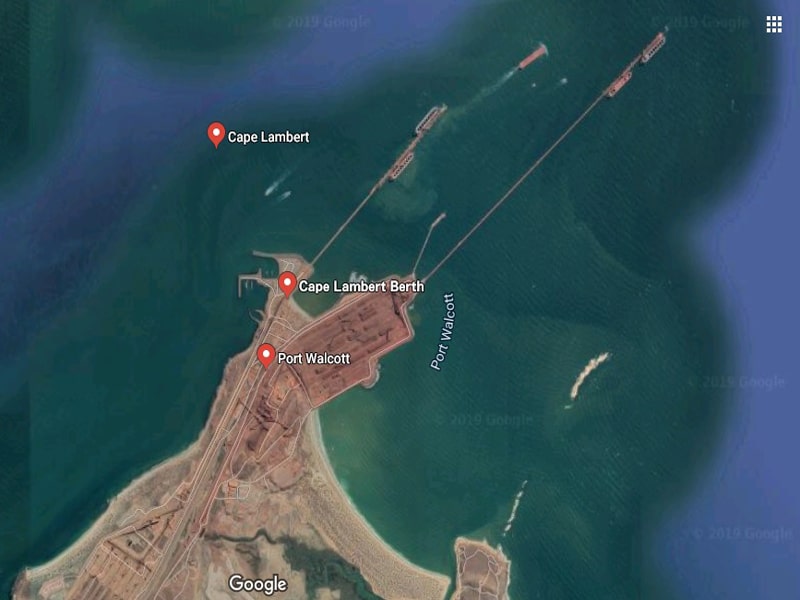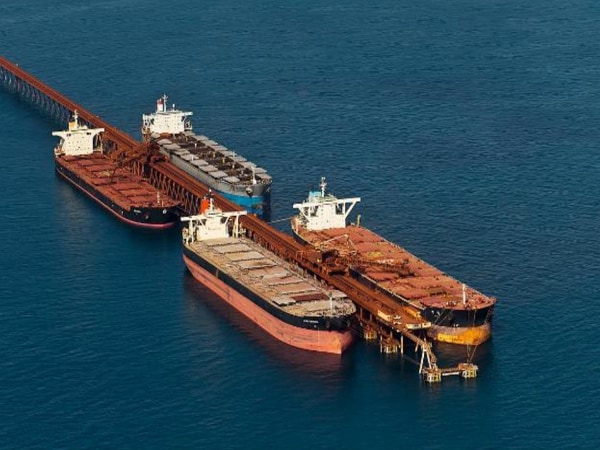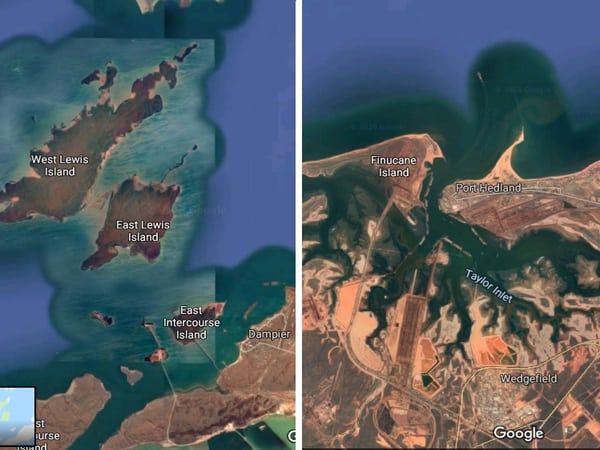A major iron ore export port with 185 million tons iron ore capacity on Australia’s north west coast has been absolutely clobbered by the recent category four Cyclone Veronica, FreightWaves can exclusively reveal. Port Walcott’s operational ability is down by nearly 90 percent. Rio Tinto has declared force majeure to its customers. Major miner, Rio Tinto, which operates the port, is mostly staying silent. Dry bulk freight rates are likely to be hit, sources say.
Operationally crippled
Port Walcott has been so operationally crippled by Cyclone Veronica that it can only handle one vessel at a time instead of its normal eight, sources have told FreightWaves. That’s an 87.5 percent reduction in operational capacity. Our estimate is based on sources commenting that there are two jetties and each normally handles four vessels of about 170,000 deadweight tons every 24 hours. Deadweight is a measure of weight-carrying capacity in metric tons. This article uses deadweight tons for ocean shipping capacity and metric tons for port throughput.

The first vessel handled after the restart of operations took place at approximately 14:45 Australian Western Standard Time on Thursday March 28.
Port operations apparently stopped at 23:45 Australian Western Standard Time on March 20, sources say, to allow the cyclone to pass. And that means Port Walcott was out of business for about 183 hours.
Port Walcott basically consists of two very large iron ore stockpiles and two very large finger jetties that jut out into the Indian Ocean.
One jetty is called “Cape Lambert A”. CLA has a capacity of more than 85 million metric tons per annum of iron ore throughput. CLA can take ships up to 255,000 dwt.
The other is called “Cape Lambert B”. CLB can load more than 100 million tons per annum of iron ore and can handle vessels of up to 255,000 dwt. CLB is the newer of the two and began operations in August 2013. There are four berths on each of CLA (1-4) and CLB (5-8), giving eight berths in total.

Intelligence
FreightWaves has today received the following intelligence (below) from our sources. The storm surge has caused a “fair bit of damage to channel markers and other infrastructure”.
Berths one and two on CLA are down for two and five months respectively. Berths three and four on CLA are down for three weeks.
Given that berths are down for literally weeks and months, sources speculate that CLA may have suffered structural damage, however, it must be emphasised that the possibility of structural damage is speculation at this point. Structural damage has not been confirmed by Rio Tinto.
There is no lighting on CLB which means that operations can now only be carried out in daylight.
Charlie 1 (a fairway buoy that marks the entrance to the navigation channel) is missing. 10-15 channel markers have been “stripped”.
No channel markers, no operations
Good markers are vital to the correct operation of a port. Some ports do not have sufficient depth between the surface of the water and the sea-bed to allow large, fully-laden, vessels to transit. So the appropriate entity (the port authority, operator, or owner depending on the circumstances) will arrange to dig a large, deep and wide ‘trench’ into the seabed that allows the vessels to approach and berth at the wharfside. This trench is known as the “access channel”.
If there is no access channel, or if it is blocked or silted-up, or if the various channel markers are missing or damaged, then transit by a vessel from the deep ocean to the dock becomes much more unsafe or even impossible.
Rio Tinto comments… sort of
FreightWaves has several times attempted to contact Rio Tinto. We have twice now received short statements but they do not explain to what extent damage had been sustained at Rio’s operations.
The first statement from Rio, on March 26, says that “the safety and wellbeing of our teams remains our top priority as we commence work to ensure a safe re-entry to site following the passing of the cyclone. With weather clearing, staff will gradually start returning to affected port and rail sites today with normal operations to resume once it is safe to do so. Mining at the Robe Valley Operations is also resuming”.
The second statement, received today (Friday, March 29, 2019), says that: “Rio Tinto confirms that it has issued force majeure notices to certain customers as a result of damage caused by Tropical Cyclone Veronica to its iron ore operations in Western Australia. The company is currently assessing the impact of the damage sustained at the Cape Lambert A port facility and is working with its customers to minimise any disruption in supplies. Rail operations and shipping operations at both Port of Dampier and the Cape Lambert B terminal have resumed and are ramping up. Rio Tinto will provide a further update in the first quarter operations review on 16 April.”
“Force majeure” is a standard contract clause that removes or limits liability by one of the contract parties to the other contract parties if a big disruptive event happens, which is beyond the control of anyone, that prevents the normal supply of services. Examples include cyclones, war, earthquakes and so on.
Port Walcott has a capacity of about 185 million metric tons per annum of iron ore. A metric ton is equivalent to 2,204.6 U.S. pounds. In the 2018 calendar year (Jan to Dec 2018) the throughput of Port Walcott was 170.3 million tons; 128 million went to Chinese buyers and the other 42.3 million went to other north Asian buyers (Japan, Korea). 2018 saw a big jump in throughput at Walcott as, in the 2017 calendar year, it did about 128 million tons, which is a 33 percent increase.

Hedland and Dampier better protected
Although Port Walcott has been clobbered, the other iron ore export ports along the north west coast appear to have been relatively unharmed. And that’s because both Hedland (519.4 million metric tons, 98 percent iron ore) and Dampier (177.3 million metric tons of cargo, of which 82.6 percent was iron ore for export) have much greater protection. The port at Port Hedland firstly does not have any jetties and, secondly, it is in very sheltered water – it has a peninsula to the east and is surrounded by large islands to the north and east. Dampier does have jetties, but they are only short and connect to islands. The port as a whole is also protected by large islands that surround it.
Port Walcott is a very different port. Firstly, it has no protection of any kind. There are no sheltering peninsulas, islands, breakwaters, nothing. Secondly, the port basically consists of two large iron ore stockpiles and two long, wholly exposed, jetties. One jetty is about 1.10 miles long (1.75km) and the other is 1.85 miles long (2.96km) (see top picture).
Rail lines inundated
Finally, your local FreightWaves correspondent has also seen video imagery showing that a key iron ore railroad is now underwater. The line leads to Port Hedland, which is reported to have no significant damage, but before new supply can come from the mines, water levels on that railroad need to subside and then it has to be checked to make sure it’s not damaged. Floodwaters have a very nasty habit of doing great damage to railroads – tracks were twisted and bent after the 2010/2011 floods in Queensland.
Freight rates for the international dry bulk capesize markets have been in considerable decline in recent months. FreightWaves sought independent commentary as to the effect of Port Walcott’s outage on the international dry bulk shipping rates. It was suggested that capesize rates could decline further from the current levels of about US$4,000 / day.











